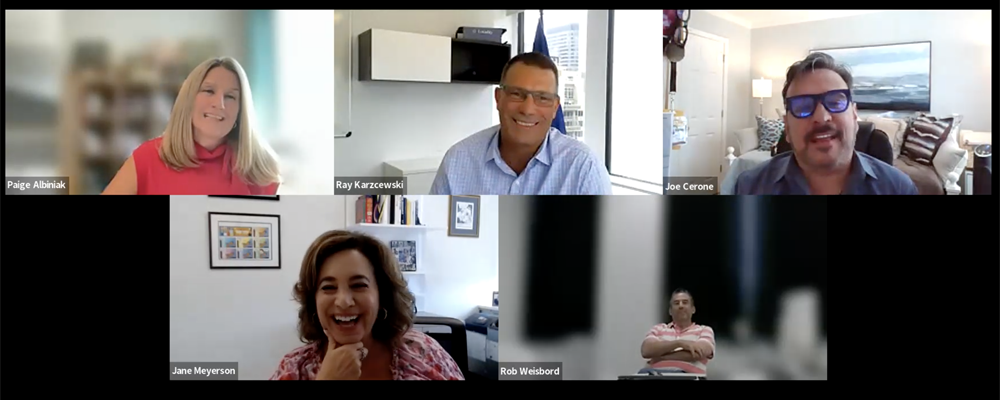
Makegoods Still Making Trouble for Stations As They Look To Advance Advertising Platforms

Makegoods and discrepancies are the biggest sticking point between agencies and TV stations as both local TV advertising buyers and sellers move toward automated systems, said panelists on TVNewsCheck’s webinar, Revenue Strategies: The Quest for Streamlining Local TV Advertising Buying & Selling, moderated by this reporter last week.
“It’s still so manual,” said Jane Meyerson, SVP, director of local broadcast, Icon International. “Our buyers and our associates are buried in manual stuff, and they shouldn’t be in 2023.”
“It’s a legacy model,” said Joe Cerone, EVP, local investment, Magna. “When a bigger advertiser comes in with higher costs, they blow you out. We need to get away from the model that it is OK to preempt.”
While rearranging ad schedules is something local TV stations have long done, it doesn’t mean advertisers and agencies have to like it, and it’s something they are growing less tolerant of as systems evolve. Broadcasters are trying to work with them to improve the model, but it’s slow going.
“If we take a piece of business, we should run it,” said Rob Weisbord, Sinclair COO and president of broadcast, which is working with artificial intelligence and machine-learning solutions to help it manage advertising inventory and schedules. “I would say the majority [or make goods] that I see on our ledger is more due to network changes than really an oversold situation. But if we sell something, we have a fiduciary responsibility to run it.”
Agencies also hate it when they base media buys on a plan and then see their ads moved into less desirable time slots, such as out of the late news and into the middle of the night. A certain number of viewers may still be seeing the spot, but it’s not the viewer that they intended.
“You’re paying a premium, for example, for an NFL spot. And then if it’s running in nothing against the late news, that is not an apples-to-apples eyeball, for sure,” Meyerson said.
That said, the 2024 presidential campaign is already ramping up and ads will start flooding battleground markets early next year during the primaries, creating many more makegood situations. While political advertising doesn’t affect all local markets, in the markets where it does it comes in hot and heavy, disrupting the schedules of many other advertisers. That creates a great deal of extra work — and revenue — for broadcasters in those markets.
“In the markets that are hot, I’m going to get a 24-hour record and manage expectations every 24 hours because that’s the fair thing to do,” Weisbord said.
Agency buyers, meanwhile, need to set client expectations accordingly and think about other ways they can get messages out during tight times.
“It’s always about having a contingency plan going into those battleground markets. You have to have like plan A, B, C and D, frankly,” Meyerson said.
“We try to educate our agencies and stations … on where there’s some of these key states or markets that will be hit very, very hard when it comes to political,” said Ray Karzcewski, EVP, broadcast sales at local TV solutions provider Locality. “You know, that’s typically not a 52-week-a-year advertiser, even in 2024. There are windows there that you have to be concerned about how deep, how far outside those windows they could go and that depends on each of the races and on how much money they have.”
One way advertisers are trying to eliminate makegoods and discrepancies is through pay-for-performance campaigns, which, in theory, should match agencies’ expenditures to their results. That said, not everyone is sold on that model.
Magna’s Cerone is a big proponent of the idea, which is still in its early stages. “Pay for performance is not 100% in the landscape yet. I’d say it might be 55%,” he said. “I’m trying to get the industry to go 100%. I don’t know if I’ll get there in my lifetime. But I think it has worked out fabulously.”
Icon’s Meyerson, however, is less excited about the idea: “I’m not a believer in pay per performance. I don’t want money. I feel like it’s a cash-back scenario and I don’t want that. I want to book a schedule and I want it to run.”
Sinclair’s Weisbord supports the idea theoretically but says continuing problems with local TV measurement and currency methodology make it difficult for TV stations to commit to pay-for-performance deals.
“The zero-cell phenomenon and other issues that occur with Nielsen scare the crap out of me [when it comes to pay for performance],” Weisbord said, noting that if agencies are booking schedules based on rates of return, then everyone has to be sure those targets are being hit.
While the industry is working to install automation and other technologies to speed things along, relationships remain key even as all areas of the business are being disrupted, and especially when it comes to issues such as makegoods, discrepancies, political ad placements, disrupted schedules and so forth.
“At the end of the day, nothing beats a dedicated full-service team,” Karzcewski said. “It’s my job to get my people to go out and talk to the agencies about selling the value of the clients that we have, regardless of whether it’s streaming, or if it’s linear TV.”
Keeping those relationships intact will be necessary as the industry pushes towards the next phase of its development.
“We don’t have time to have a legacy mentality,” Weisbord said. “We have to be dealing with the modern world. Once upon a time, the dinosaur was the most feared species on the planet. And then there was an environmental change and now you find dinosaurs in museums. We are in a time of much bigger environmental change. If we don’t do things better with modern-day technology, down the road we don’t exist.”
































Comments (0)